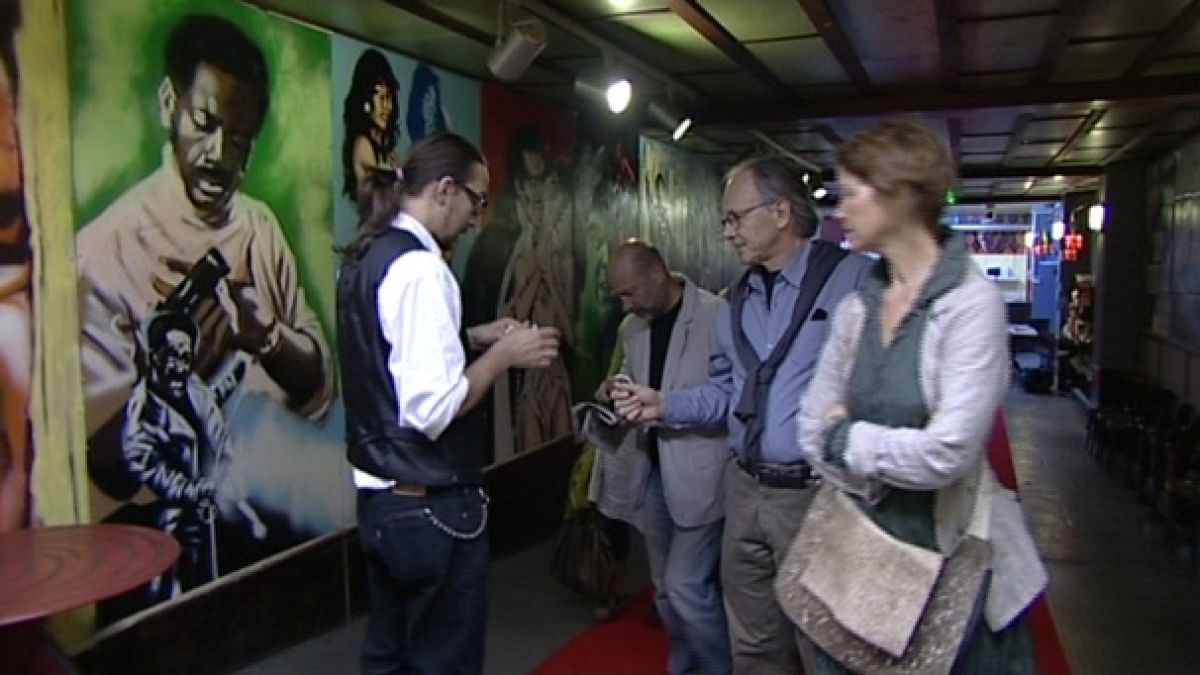Michele Berrebi owns a small cinema in the south of France in Provence. The cinema was set to close when she bought it four years ago. Michèle admits her survival depends on showing blockbuster films which, in turn, allow her to programme smaller, independent ones, offering her clients the diversity of European cinema. But it is not easy.
She explained: “There is a real problem with European cinema. First multiple languages are a handicap. It means that for a distributor who buys a film in Swedish or even English or any other language, subtitling that film is very expensive. Secondly, very few films correspond to the French structure, by which I mean films which will attract at least 400,000 cinema-goers which will make it profitable for a distributor. There are wonderful films all across Europe but they’ll only get 100,000 or 120,000 cinema-goers. So the distributors are pretty cautious about that.”
Getting distributors to take more of a risk is at the heart of the battle over the success of European cinema. It is estimated that out of 1,200 films produced in Europe last year, less than half made it to the big screen. Four out of five films shown in Europe were American ones. In some countries like the UK, that figure reached 95 percent.
Michelle Berrebi says she often hosts events where she invites European directors to a screening of their film. It is time consuming, often successful, but not always profitable. Especially in a town of 10,000 people.
On the opening night of the Cannes Film festival Michele programmed Woody Allen’s film ‘Midnight in Paris’. It is an obvious irony that the festival’s opening film is American, even if Allen pays tribute to the French capital.
Cannes is perhaps the biggest and most notorious of the international film festivals. It is also a film maker’s and, especially, a film distributor’s paradise. Besides the films in competition there is also a film market where an estimated 10,000 participants and 4,000 films are part of the industry’s network. But how many are European? And how many get bought for distribution rights?
Eduardo Carneros is a Spanish film producer who believes the best way to sell your film is to try and distribute it yourself. Not an easy task. He said: “One of the big problems of distribution in Europe is the existence, perhaps not of an enemy but of a big marketing and sales machine which controls distribution channels and therefore cinema audiences. They have a lot of power, like big fast food chains which open branches all over the place. When there’s a McDonalds everywhere, it’s difficult to buy and sell other products. You have to look European politicians in the face and say ‘Look, this cultural richness needs a helping hand’. And it’s not just a question of cultural diversity, but also of economic competition.”
The film ‘Las Acacias’, produced by Eduardo Carneros and directed by Pablo Giorgelli was presented at ‘Cannes’ Critics Week’. It is about a truck driver in South America who picks up a woman hitch-hiking with her baby. It’s a long trip. The critics liked it. Now it just needs to get distributed.
Nanni Moretti is no stranger to Cannes or the problems of distribution. The Italian director showed his first film here 35 years ago and won the Palme d’Or in 2001. He also owns a cinema in Rome where he can show his films and help others.
This year he was in Cannes to show his latest film ‘Habemus Papam’ or ‘We Have a Pope’. It is about a new pope who gets cold feet when he realises the weight of his responsibility. A psychiatrist played by Moretti, is brought in to help.
Like his films, Moretti defends the film industry with humour: “In Italy many of the small, local cinemas have closed; and multiplexes attract a different kind of audience. There should be a large network of arthouse cinemas, multiplex, cinemas with 2, 3, 4 screens in many cities to show art cinema. The problem is that sometimes even the “art cinema” directors make bad movies, so if the audience sees one, two, three, four, five bad films, then the sixth film, which may be a really good film, they won’t go see it.”
The trick is making a good European film people will want to see. For film director Nic Balthazar, that is what cinema is all about. In the Belgian city of Ghent, euronews joined Balthazar on the set of his film ‘Till Always’. It is based on a true story about a young man who has multiple sclerosis. He asks his friends to help him die with dignity which, they do, once Belgium legalises euthanasia.
The film is a co-production, part of its small budget has EU funding and it is in Flemish. For Balthazar, different languages are an asset, not an obstacle. His last film was sold to 52 countries.
He said: “Cinema is the only thing or place where a ticket costs 10 euro. And you could buy a ticket for a film that costs 200 million dollars to make or for a film like my film which costs less than two million euros. So you could either buy a Maserati or a cheap bike. But the incredible thing is that sometimes with our cheap bikes, we can sometimes surpass those Maseratis. That’s the great thing about European cinema.”
Cultural and language diversity. Funding from EU programmes which have totalled close to two billion euros in the past 20 years. Creative directors and actors. All the right ingredients for a cinema which, no matter how many takes, is determined to win its battle with the big screen.
